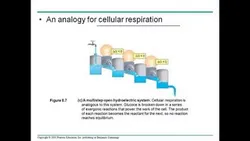
Metabolic Biochemistry Fundamentals: DNA and Energy Pathways 
Metabolism is a complex biochemical process that occurs in all living organisms. It involves the breakdown of molecules to produce energy and the synthesis of new molecules. Locations of metabolism biochemistry include the cell membrane, mitochondria, and cytoplasm. Oxidative phosphorylation is a key part of metabolism, as well as metabolic pathways. Additionally, there are differences between A, B and Z DNA. All of these processes are essential for life. ▼
ADVERTISEMENT
Course Feature
![]() Cost:
Cost:
Free
![]() Provider:
Provider:
Youtube
![]() Certificate:
Certificate:
Paid Certification
![]() Language:
Language:
English
![]() Start Date:
Start Date:
On-Demand
Course Overview
❗The content presented here is sourced directly from Youtube platform. For comprehensive course details, including enrollment information, simply click on the 'Go to class' link on our website.
Updated in [February 21st, 2023]
Metabolism - overview 2.
Metabolism - overview 3.
Metabolism biochemistry - locations.
Metabolism biochemistry - locations 2.
Oxidative phosphorylation.
Metabolism and metabolic pathways.
Difference between A, B and Z DNA.
Major groove and minor groove.
Propeller twist.
Sugar puckering.
Z DNA.
Triple stranded DNA.
DNA structure | Slipped DNA.
Repeat sequences in DNA.
DNA structure | Quadruplex DNA.
DNA structure | H DNA.
DNA structure | Cruciform DNA.
DNA structure | Bent DNA.
Collagen protein.
Protein structure | tertiary structure of proteins.
Protein motifs and domains | secondary structure of proteins.
Alpha helix | secondary structure | protein structure.
DNA structure | cruciform DNA, quadruplex DNA, triple stranded DNA.
Torsional angle.
Ramachandran plot.
Peptidoglycan structure and biosynthesis.
Peptide bond structure | formation and rotation of peptide bonds.
Structural motifs of protein.
Keratin protein.
Glycosaminoglycans (GAGs).
Beta sheet | beta pleated sheet | secondary protein structure.
Bacterial flagella | structure and motility.
Protein structure | Random coil structure.
RNA structure and synthesis and types.
Protein symmetry | structural symmetry.
Michaelis menten plot and equation.
Allosteric enzyme.
Double reciprocal plot for competetive inhibition.
Double reciprocal plot for mixed inhibition.
Double reciprocal plot for uncompetitive inhibition.
Double reciprocal plot.
Progress curve of simple enzyme catalyzed reaction.
Anfinsen's experiment and protein folding.
Protein folding models.
Protein folding mechanism.
Proteolysis.
Activation energy and Enzymes (Animation).
Enzyme kinetics animation.
Zymogen activation.
Enzyme substrate complex.
Isozyme.
Enzyme catalysis mechanism.
Glycolysis.
Feeder pathways of glycolysis.
Fate of pyruvate.
Galactose metabolism.
Fructose metabolism.
Breakdown of glycogen.
Glucose transport from liver to blood cell.
Glycogen metabolism.
Citric acid cycle biochemistry.
Dietary fat metabolism.
Gluconeogenesis overview.
Gluconeogenesis.
Gluconeogenesis regulation.
Role of glycogen phoisphorylase.
Gluconeogenesis pathway.
The Cori cycle.
Citric acid cycle (TCA cycle).
Regulation of citric acid cycle.
Pyruvate oxidation.
Pyruvate dehydrogenase complex.
Pentose phosphate pathway.
Pyruvate dehydrogenase complex overview.
Pyruvate dehydrogenase complex mechanism.
Regulation of pyruvate dehydrogenase complex.
Gluconeogenesis.
Metabolism big picture.
Electron transport chain animation.
Citric acid cycle explanation.
Amphibolic pathways of citric acid cycle.
Binding change mechanism of ATP synthesis.
Comparison between glycolysis and gluconeogenesis.
Coupling of ETS and ATP synthesis.
Glucose transporter 4 activity.
Regulation of hexokinase 4.
Glycogen metabolism regulation.
Malate aspertate shuttle.
Overview of glucose metabolism.
Overview of oxidative fuel metabolism.
Dolichol phosphate synthesis pathway.
Nonoxidative deamination.
Oxidative deamination.
Transamination reaction mechanism.
Tetrahydrofolate (THF).
S adenosyl methionine (SAM).
Transmethylation.
The mitochondrial electron transport chain.
The cori cycle.
Neoglucogenesis.
ATP synthesis (chemiosmotic theory).
Amino acid structures (part 2).
Amino acid structures (part 3).
Enzyme inhibition.
Enzyme catalysis.
Enzyme inhibitor (competitive inhibition).
Central dogma (replication, transcription and translation).
Amino acid structures (part 1).
Amino acid structures (part 2).
Protein splicing.
(Please note that we obtained the following content based on information that users may want to know, such as skills, applicable scenarios, future development, etc., combined with AI tools, and have been manually reviewed)
Metabolism - overview 2.
Metabolism - overview 3.
Metabolism biochemistry - locations.
Metabolism biochemistry - locations 2.
Oxidative phosphorylation.
Metabolism and metabolic pathways.
Difference between A, B and Z DNA.
Major groove and minor groove.
Propeller twist.
Sugar puckering.
Z DNA.
Triple stranded DNA.
DNA structure | Slipped DNA.
Repeat sequences in DNA.
DNA structure | Quadruplex DNA.
DNA structure | H DNA.
DNA structure | Cruciform DNA.
DNA structure | Bent DNA.
Collagen protein.
Protein structure | tertiary structure of proteins.
Protein motifs and domains | secondary structure of proteins.
Alpha helix | secondary structure | protein structure.
DNA structure | cruciform DNA, quadruplex DNA, triple stranded DNA.
Torsional angle.
Ramachandran plot.
Peptidoglycan structure and biosynthesis.
Peptide bond structure | formation and rotation of peptide bonds.
Structural motifs of protein.
Keratin protein.
Glycosaminoglycans (GAGs).
Beta sheet | beta pleated sheet | secondary protein structure.
Bacterial flagella | structure and motility.
Protein structure | Random coil structure.
RNA structure and synthesis and types.
Protein symmetry | structural symmetry.
Michaelis menten plot and equation.
Allosteric enzyme.
Double reciprocal plot for competetive inhibition.
Double reciprocal plot for mixed inhibition.
Double reciprocal plot for uncompetitive inhibition.
Double reciprocal plot.
Progress curve of simple enzyme catalyzed reaction.
Anfinsen's experiment and protein folding.
Protein folding models.
Protein folding mechanism.
Proteolysis.
Activation energy and Enzymes (Animation).
Enzyme kinetics animation.
Zymogen activation.
Enzyme substrate complex.
Isozyme.
Enzyme catalysis mechanism.
Glycolysis.
Feeder pathways of glycolysis.
Fate of pyruvate.
Galactose metabolism.
Fructose metabolism.
Breakdown of glycogen.
Glucose transport from liver to blood cell.
Glycogen metabolism.
Citric acid cycle biochemistry.
Dietary fat metabolism.
Gluconeogenesis overview.
Gluconeogenesis.
Gluconeogenesis regulation.
Role of glycogen phoisphorylase.
Gluconeogenesis pathway.
The Cori cycle.
Citric acid cycle (TCA cycle).
Regulation of citric acid cycle.
Pyruvate oxidation.
Pyruvate dehydrogenase complex.
Pentose phosphate pathway.
Pyruvate dehydrogenase complex overview.
Pyruvate dehydrogenase complex mechanism.
Regulation of pyruvate dehydrogenase complex.
Gluconeogenesis.
Metabolism big picture.
Electron transport chain animation.
Citric acid cycle explanation.
Amphibolic pathways of citric acid cycle.
Binding change mechanism of ATP synthesis.
Comparison between glycolysis and gluconeogenesis.
Coupling of ETS and ATP synthesis.
Glucose transporter 4 activity.
Regulation of hexokinase 4.
Glycogen metabolism regulation.
Malate aspertate shuttle.
Overview of glucose metabolism.
Overview of oxidative fuel metabolism.
Dolichol phosphate synthesis pathway.
Nonoxidative deamination.
Oxidative deamination.
Transamination reaction mechanism.
Tetrahydrofolate (THF).
S adenosyl methionine (SAM).
Transmethylation.
The mitochondrial electron transport chain.
The cori cycle.
Neoglucogenesis.
ATP synthesis (chemiosmotic theory).
Amino acid structures (part 2).
Amino acid structures (part 3).
Enzyme inhibition.
Enzyme catalysis.
Enzyme inhibitor (competitive inhibition).
Central dogma (replication, transcription and translation).
Amino acid structures (part 1).
Amino acid structures (part 2).
Protein splicing.
Course Provider
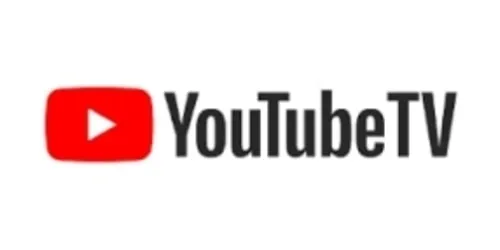
Provider Youtube's Stats at AZClass
Discussion and Reviews
0.0 (Based on 0 reviews)
Explore Similar Online Courses

TensorFlow Tutorial 19 - Custom Dataset for Text with TextLineDataset

CLEP Financial Accounting: Study Guide & Test Prep

Python for Informatics: Exploring Information

Social Network Analysis

Introduction to Systematic Review and Meta-Analysis

The Analytics Edge

DCO042 - Python For Informatics

Causal Diagrams: Draw Your Assumptions Before Your Conclusions

Whole genome sequencing of bacterial genomes - tools and applications
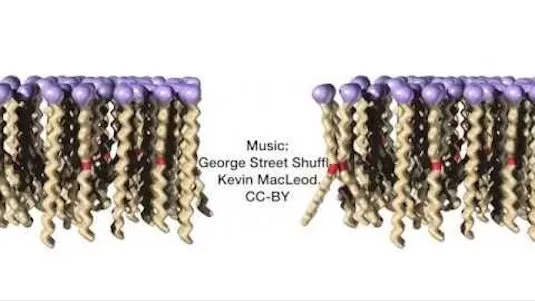
Principles of Biochemistry
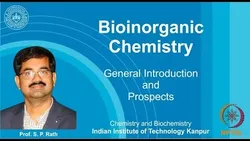
Bioinorganic Chemistry
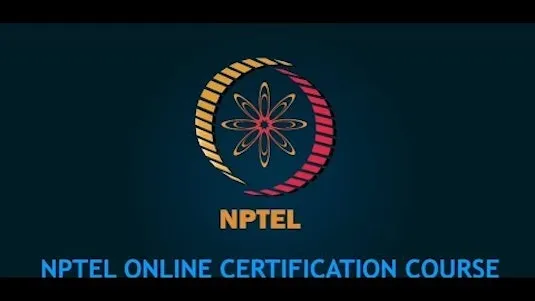

Start your review of Metabolic Biochemistry Fundamentals: DNA and Energy Pathways